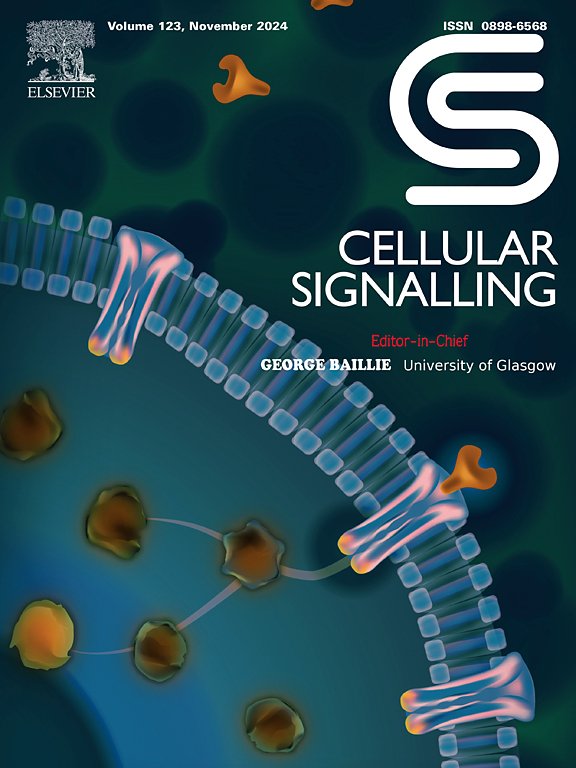Hypoxia-elicited exosomal HIF-1α promotes drug resistance of melanoma through modulating SLC7A11 ubiquitination
IF 3.7
2区 生物学
Q2 CELL BIOLOGY
引用次数: 0
Abstract
Drug resistance poses a significant challenge in the clinical management of melanoma, primarily driven by the hypoxic tumor microenvironment. This study aims to elucidate the molecular mechanisms underlying drug resistance in melanoma under hypoxic conditions. Exosomes were isolated from melanoma cells cultured under normoxic (Nor-exos) and hypoxic (Hypo-exos) environments. The proliferative capacity of tumor cells was assessed using CCK-8 and colony formation assays, while relevant molecular expressions were evaluated through qPCR, Western blotting, immunofluorescence, and immunohistochemistry. Additionally, mitochondrial damage was examined via transmission electron microscopy, and reactive oxygen species (ROS) levels were quantified using flow cytometry. Xenograft models further facilitated the investigation into the molecular mechanisms of drug resistance. Hypo-exos promote drug resistance in melanoma cells by inhibiting ferroptosis; mechanistically, Hypo-exos inhibiting p53 and OTUB1 expression through HIF-1α transfer. Furthermore, OTUB1 enhances SLC7A11 stability, thereby reducing ferroptosis levels and fostering drug resistance in melanoma. Our findings indicate that Hypo-exos inhibit ferroptosis to augment drug resistance in melanoma by delivering HIF-1α to modulate the p53/OTUB1/SLC7A11 axis. Exosomal HIF-1α may represent a promising biomarker and therapeutic target for addressing drug resistance in melanoma.
缺氧诱导的外泌体HIF-1α通过调节SLC7A11泛素化促进黑色素瘤的耐药。
耐药是黑素瘤临床治疗中的一个重大挑战,主要由低氧肿瘤微环境驱动。本研究旨在阐明缺氧条件下黑色素瘤耐药的分子机制。外泌体是从常氧(Nor-exos)和缺氧(hypoo -exos)环境下培养的黑色素瘤细胞中分离出来的。采用CCK-8和集落形成法检测肿瘤细胞的增殖能力,并通过qPCR、Western blotting、免疫荧光和免疫组织化学检测相关分子表达。此外,通过透射电镜检查线粒体损伤,并使用流式细胞术定量活性氧(ROS)水平。异种移植模型进一步促进了对耐药分子机制的研究。低外显子通过抑制铁下垂促进黑色素瘤细胞耐药;在机制上,hypoexos通过HIF-1α转移抑制p53和OTUB1的表达。此外,OTUB1增强SLC7A11的稳定性,从而降低铁下垂水平并促进黑色素瘤的耐药。我们的研究结果表明,低外显子通过传递HIF-1α来调节p53/OTUB1/SLC7A11轴,从而抑制铁下沉,增强黑色素瘤的耐药性。外泌体HIF-1α可能是解决黑色素瘤耐药问题的一个有前途的生物标志物和治疗靶点。
本文章由计算机程序翻译,如有差异,请以英文原文为准。
求助全文
约1分钟内获得全文
求助全文
来源期刊

Cellular signalling
生物-细胞生物学
CiteScore
8.40
自引率
0.00%
发文量
250
审稿时长
27 days
期刊介绍:
Cellular Signalling publishes original research describing fundamental and clinical findings on the mechanisms, actions and structural components of cellular signalling systems in vitro and in vivo.
Cellular Signalling aims at full length research papers defining signalling systems ranging from microorganisms to cells, tissues and higher organisms.
 求助内容:
求助内容: 应助结果提醒方式:
应助结果提醒方式:


